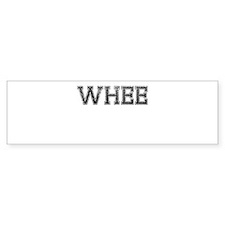Major Tom
Thinks s/he gets paid by the post
Quite inspiring REW.
Actually, scratch that - very inspiring.
Actually, scratch that - very inspiring.
Year 1: 4.8%
Year 2: 9.8%
Year 3: 7.9%
Year 4: 6.1%
Year 5: 5.4%
Year 6: 4.2%
Year 7: 3.9%
Year 8: 3.5%
1975 I think.Yes, very inspiring. Does the green line represent the best 30 year scenario in FireCalc?
Happy to do it. I'm hoping seeing some real-world experiences (warts and all) will be educational, especially for those who suffer from chronic OMY symptoms.Thank you for sharing such good and useful info.
+1Thanks for updating your post. (and yes I do know that past performance....)
Now that I am actually there (for a little over a month), I am having a tough time convincing myself to take more than 3. I am so happy to see the real life experiences of those who have done this before me. Thanks for updating your post. (and yes I do know that past performance....)
Thanks for the updates. Looking at this and reading the comments, one other thought comes to mind. A simple asset allocation and easy to manage portfolio is effective even (or especially) over a period that includes considerable market volatility.Happy to do it. I'm hoping seeing some real-world experiences (warts and all) will be educational
+1I also think you have hit on another aspect to the eternal "when do I take SS debate" which is that taking SS before FRA or before age 70 can be a "Plan B" alternative that gets used if a series of bad years shows up or portfolio starts showing depletion greater than planned.
A simple, low cost, self-balancing AA also fits the bill for those of us who see a portfolio as something that tends to function far better when you don't meddle with it. Not to mention the fact portfolio management is work - and I'm retired!Looking at this and reading the comments, one other thought comes to mind. A simple asset allocation and easy to manage portfolio is effective even (or especially) over a period that includes considerable market volatility.


<hand goes up> Me! Me!I am hoping that my results might be helpful to those contemplating lower spending levels, to see that they might want to spend more.
<hand goes up> Me! Me!
But then based on my 5.7% average, maybe I should stick with trying to stay under 4...
You are off to an amazing start. You have enough wiggle room in your spending to dance the Watusi!
You are off to an amazing start. You have enough wiggle room in your spending to dance the Watusi!
Yikes Walt. Even though that word can have a calamitous effect when said by W2R, it can still have a potentially injurious result if uttered by others.(I guess she'll never live that down!)

